
Plantastic
Make plant care effortless.
Plantastic is a hi-fi Figma prototype for gardeners with limited digital experience. Group plants, see clear care advice, and with a connected sensor get personalized tips from real-time data.
Hi-Fi Figma Prototype
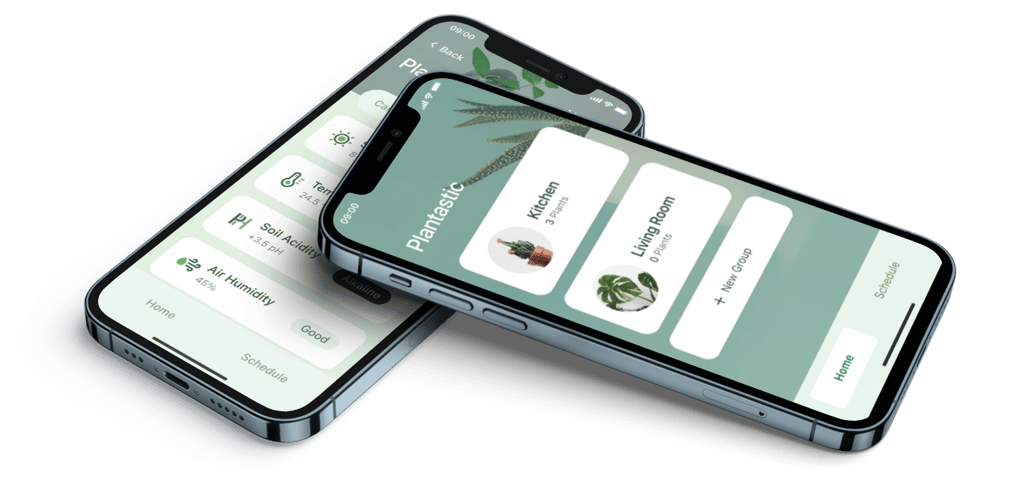

Project Overview
This course project involved creating a multiplayer music quiz web app connected to Spotify, designed to be played live with friends for a more engaging and social experience. We worked through the full design process, from ideation and prototyping to user testing and iteration, focusing on a clear and intuitive flow for hosting, joining, and playing quizzes. The app was built in React with a structured architecture. This kept the interface simple while still supporting real-time interaction and quiz logic. The project combined user-centered design with technical development.
Course
Tools
Time Frame
Media Technology and Interaction Design 7.5hp KTH
Aug 2024-Jan 2025 50% study phase
Figma, Excel,
The process
Goals
Our goal in this interaction design course was to create an app that nurtures connection, whether to community, other people, or nature, while being welcoming to users with limited digital experience. We put much time on the design process and every decision was guided by the same question: does this reduce friction and help someone who’s less comfortable online feel confident, oriented, and in control?
Approach
Ideation
We chose the Double Diamond model because it gives us room to diverge and explore before we converge on a solution. This reduces the risk of “solution-first” thinking, creating clear decision gates, and keeping the team aligned.
We conducted semi-structured interviews with six participants from the target group to better understand their gardening habits, pain points, and existing tools.
Interviews
We knew from the start that we wanted to foster a human–plant connection. To define who we were designing for, we alternated between broad reading (scanning across HCI, and gardening studies), narrowing insights, and then doing focused deep dives. A back-and-forth that helped us sharpen the audience and the problem. This process led us to focus on individuals aged 60+ who do indoor gardening as a hobby. The literature consistently links gardening to significant mental and physical health benefits for older adults, and also notes that many people 60+ have more time for hobbies as children move out and retirement approaches. Recognizing that this group can include users with varied levels of digital confidence (without assuming limited ability), we set early design principles around approachable interactions, clear language, and low-friction onboarding.
Literature review findings
Findings
Psychological benefits: Lower stress/anxiety, greater calm, satisfaction, improved mood and confidence.
Physical benefits: Light–moderate physical activity, valuable for older adults.
Social connection: Sharing tips/plants/experiences builds belonging and community.
Human–nature connection: Time with plants supports restoration and wellbeing.
Relevance for 60+: More time for hobbies (empty nest/retirement) makes indoor gardening a good fit.
Challenges & gaps
Home constraints: Limited light/space, humidity control, plant mortality discouraging for beginners.
Care complexity: Conflicting advice, hard to match plant needs to the home, remembering schedules (water/feed/repot).
Accessibility & UX: Small text/jargon, multi-step flows, varying digital confidence can hinder use of apps/devices.
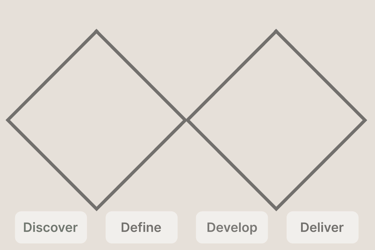

Discover
ideation
literature review
interviews
affinity diagram
problem statement
personas,
POVs
HMW
scenarios
worst possible idea
brainwriting
parallel prototyping
lo-fi wireframes
user testing
hi-fi wireframes
MVP
Define
Develop
Deliver
Affinity diagram
Key Questions
Context & motivation: Tell me about your gardening: experience, goals, routines, and what you enjoy most.
Pain points & workarounds: What’s hardest for you, how does it affect the fun, and what have you tried (what worked/why not)?
Learning & support: Where do you get guidance, do you use/avoid any tools or apps, and is gardening social or mostly solo?
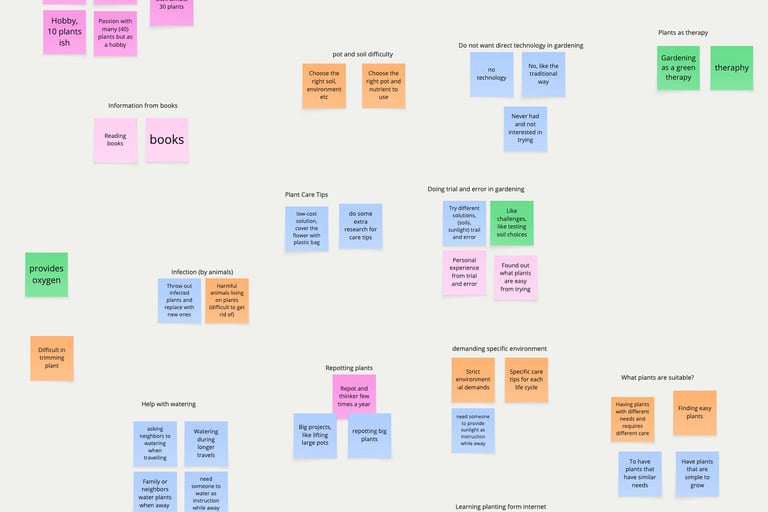

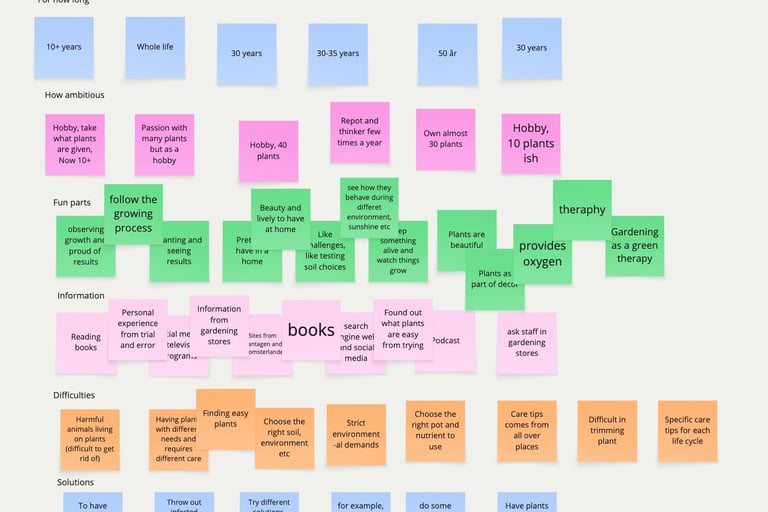

We used an affinity diagram to organize the interview notes.
Prioritized points
Prioritized findings (from the affinity diagram):
Choosing suitable plants for home conditions felt hard.
Users felt overwhelmed by care tips (confusing/contradictory advice).
Strong joy in caring for something living and seeing it grow.
Personas
With insights from the interviews, we created one persona for our plant app—an indoor gardener 60+ with varied digital confidence. This persona captured goals, routines, and pain points (e.g., choosing suitable plants, overwhelming care tips) and guided our decisions on flows, content, and accessibility.
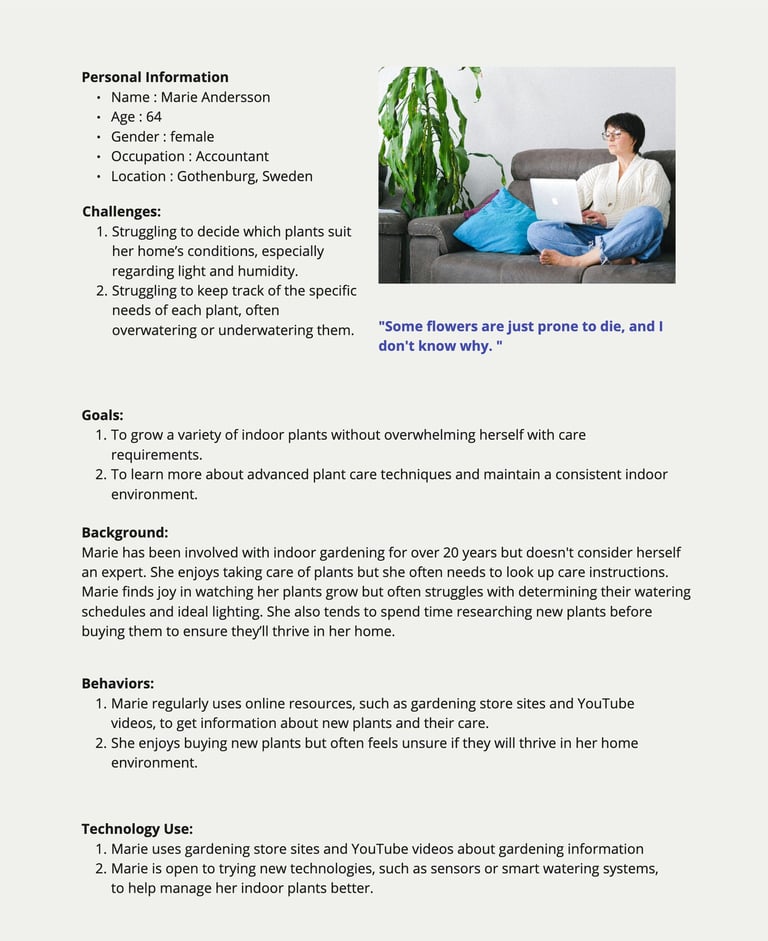

Point of View, POV
Marie needs help choosing plants that fit her home and care capacity (light, humidity, time/effort) because online advice is inconsistent and overwhelming.
Marie needs a simple way to track each plant’s specific care (water, light, feed, repot) because instructions are scattered and easy to forget.
Marie needs clear guidance when a plant struggles (what it means and what to do now) because symptoms are hard to read and she loses confidence.
How Might We, HMW
HMW match plants to Marie’s home conditions and care profile?
HMW turn fragmented care tips into one easy routine with groups, reminders, and checklists?
HMW give early, confidence-building feedback to spot issues and suggest actionable fixes?
Scenario
Marie is an accountant with a busy lifestyle. She enjoys caring for her indoor plants, though she doesn’t consider herself an expert. One Saturday morning in Gothenburg she notices a new plant’s leaves browning and worries she has overwatered it. Sitting on her sofa, she browses plant-care websites and YouTube videos, trying to find solid advice.
As she scrolls, she becomes overwhelmed by conflicting guidance on watering schedules. One source recommends every few days, another warns against anything more than weekly. She sighs, looks at her other plants that seem to be thriving, and hopes she hasn’t been making the same mistakes.
Later that day, Marie reflects on a bigger challenge: understanding which plants actually suit her home’s conditions, especially light and humidity. She wants to grow a variety of indoor plants without overwhelming herself, while still keeping track of each plant’s specific needs.
Determined to find a solution, she decides to identify one trusted source and also explore care technologies such as sensors and smart watering systems. Despite the frustrations, she enjoys seeing her plants grow and keeps learning.
